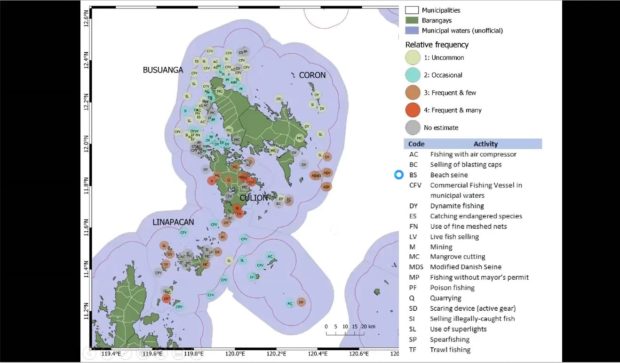A holistic approach to addressing IUU fishing
In the constant battle against Illegal, Unreported and Unregulated (IUU) fishing in the country, numbers alone do not tell the whole story. According to the United States Agency for International Development’s (USAID) Fish Right Project, the human element has to be considered too, for any positive impact to take place in just one site.
For the longest time, regulators and enforcers have measured their efforts based on the number of violators apprehended, the number of required patrol boats, equipment, training, and other resources they need.
However, according to Rollan Geronimo, Fish Right’s IUU Fishing Specialist through the Marine Environment and Resources Foundation, Inc., “Understanding IUU fishing requires recognizing a complex interplay of factors that include looking at the perspectives of fishers and their motivations, moving towards incentivizing the act of going legal, and overcoming the task of quantifying its prevalence.”
Early this year, Geronimo, together with his colleagues Atty. Wilmon Peñalosa and Jomel Babao, have initiated a new way of measuring IUU fishing in the Calamianes Group of Islands in Palawan. Ideal for its vast marine waters and rich marine biodiversity, the area is also a longtime site of several research efforts by local and international groups. Its municipalities are also highly dependent on fisheries resources, making it a hotspot for IUU fishing activities.

Threat maps. Fish Right conducted a mapping exercise where representatives from municipalities of the Calamianes Group of Islands were asked to point out where the various types of violations occur and rate their relative frequency. IUU fishing specialist Rollan Geronimo noted that these are useful in identifying IUU fishing hotspots and developing strategies to sweep these threats off the map, one point at a time.
Through ongoing workshops with the local government units, the team applies strategies that focus on compliance and behavior change, gaining insights from the socio-economic factors that drive illegal fishing.
“By putting IUU in a more human perspective, we point out that these practices are done by choice, and incentivizing legal practices can help instill positive changes in their behavior, and make them see how going legal benefits their communities,” Peñalosa explained.
In Busuanga municipality, one strategy is to engage former illegal fishers in Bantay Dagat activities, patrolling the coastal waters with incentives from the LGUs. Some are also engaged in tourism activities, which would be very lucrative once the area opens up again to tourists, since Busuanga is second to Coron in tourism.
Apart from understanding the drivers and motivations of illegal fishing activities, Fish Right also stresses the need to develop a nationwide index to understand the entire IUU fishing scenario. Geronimo and Peñalosa have spearheaded a quantification process that involves obtaining estimations from the four LGUs in Calamianes Island Group. Methods included mapping the frequency of IUU fishing activities, detecting violation hotspots across the municipalities and their waters, monitoring the presence of boats, and identifying the profiles of violators and the kind of gear they used during their activities.
Based on multi-stakeholder assessments, illegal fishing in the Calamianes Group of Islands’ combined municipal waters yields an estimated 1,158 metric tons per year, valued over Php 57 million. Almost 70 percent of this is caught by ‘outsiders’ or non-residents of the four LGUs, and this highlights the need for greater support to fully curtail IUU fishing in their waters. Meanwhile, 30 percent of the illegal fishing yields are from locals who are well within reach of authorities, so multiple interventions can be done to help them cross-over towards legal, reported, and regulated fishing.
Fish Right aims to replicate the method to other coastal municipalities and has recently conducted a Delphi Estimation workshop involving multiple discussions with on-ground fisheries experts, fisheries bureau officials, and maritime enforcers to come up with a comprehensive IUU Index.
“We need this ‘thermometer’ to help us gauge how well we are doing in deterring, preventing, and eliminating IUU fishing nationwide,” said Nygiel Armada, Chief of Party of the Fish Right Project. “All these efforts will work towards rallying for more support from the government and even the private sector, and simultaneously managing resources and protecting the environment.”
Geronimo said that the Bureau of Fisheries and Aquatic Resources (BFAR) has expressed its support to this initiative. Along with Fish Right, the agency targets to roll out the IUU Fishing Index in 2021.
ADVT